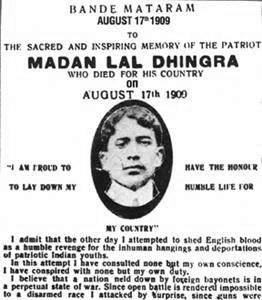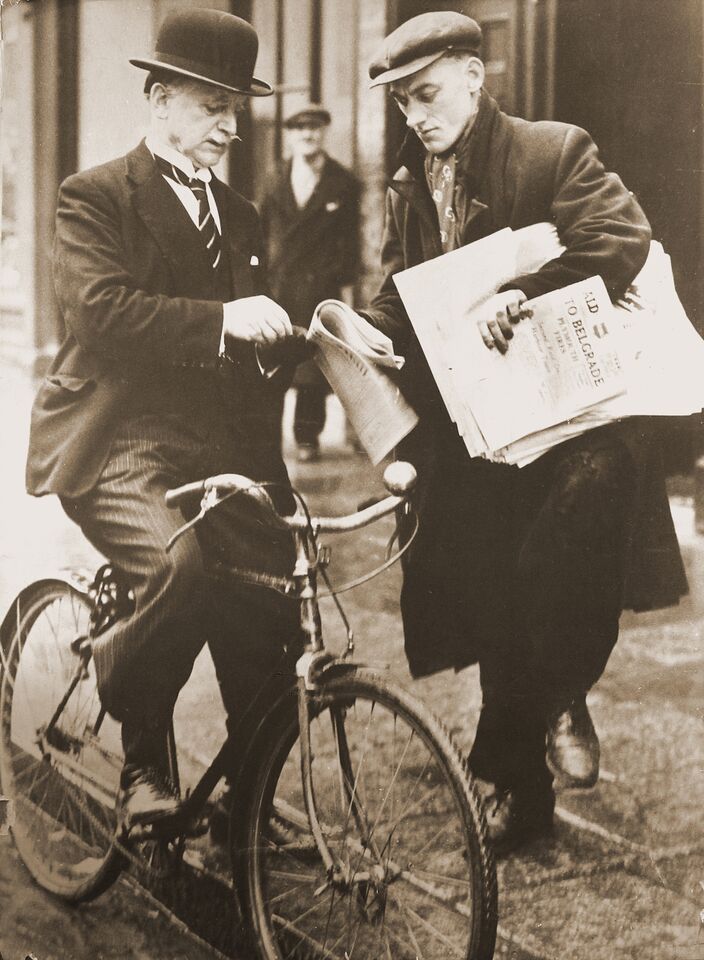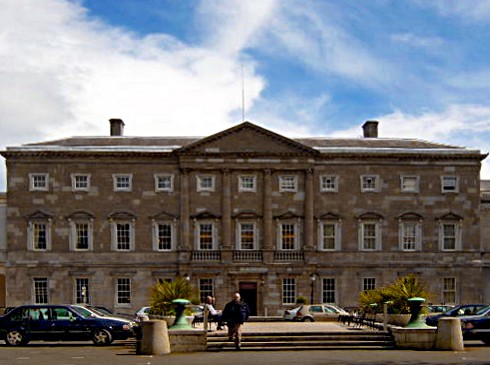|
1931 Seanad
The 1931 Seanad was the part of the Seanad of the Irish Free State (1922–1936) in office from the 1931 Seanad election to the 1934 Seanad election. Elections to the Seanad, the Senate of the Oireachtas (parliament of the Irish Free State), took place on a triennial basis, with senators elected in stages. The 1931 Seanad included members nominated in 1922, and members elected at the 1925, 1928 and 1931 Seanad elections. It sat as a second chamber to the 6th Dáil elected at the September 1927 general election, the 7th Dáil elected at the 1932 general election and the 8th Dáil elected at the 1933 general election. The Seanad of the Irish Free State was not numbered after each election, with the whole period later considered the First Seanad. Composition of the 1931 Seanad There were a total of 60 seats in the Seanad. In 1931, 23 senators were elected. The 1925 Seanad election was a popular election. However, at the 1928 and subsequent Free State Seanad elections, the f ... [...More Info...] [...Related Items...] OR: [Wikipedia] [Google] [Baidu] |
Seanad Éireann (Irish Free State)
Seanad Éireann (; ''Senate of Ireland'') was the upper house of the Oireachtas (Irish Free State), Oireachtas (parliament) of the Irish Free State from 1922 to 1936. It has also been known simply as the Senate, First Seanad, Free State Senate or Free State Seanad. The Seanad was established under the 1922 Constitution of the Irish Free State. A number of constitutional amendments were made to change the manner of its election and its powers. It was eventually abolished in 1936 when it attempted to obstruct constitutional reforms favoured by the government. It sat, like its modern successor, in Leinster House. Powers The Seanad was subordinate to Dáil Éireann (Irish Free State), Dáil Éireann (the lower house) and could delay but not veto decisions of that house. Nonetheless, the Free State Senate had more power than its successor, the modern Seanad Éireann, which can only delay normal legislation for 90 days. As originally adopted the constitution provided that the Free Sta ... [...More Info...] [...Related Items...] OR: [Wikipedia] [Google] [Baidu] |
September 1927 Irish General Election
The September 1927 Irish general election to the 6th Dáil was held on Thursday, 15 September, following the dissolution of the 5th Dáil on 25 August by Governor-General of the Irish Free State, Governor-General Tim Healy (politician), Tim Healy on the request of President of the Executive Council of the Irish Free State, President of the Executive Council W. T. Cosgrave. The 6th Dáil met on 11 October 1927 to nominate the president and Executive Council of the Irish Free State, Executive Council of the Irish Free State for appointment by the Governor-General. Cosgrave was re-appointed leading a 4th Executive Council of the Irish Free State, new minority government of Cumann na nGaedheal with the support of the Farmers' Party (Ireland), Farmers' Party. Campaign The second general election of 1927 followed tight political arithmetic within Dáil Éireann (Irish Free State), Dáil Éireann. Only three seats separated the two largest parties in the 5th Dáil, Cumann na nGaedheal ... [...More Info...] [...Related Items...] OR: [Wikipedia] [Google] [Baidu] |
Arthur Vincent (politician)
Arthur Rose Vincent CBE (9 June 1876 – 24 September 1956) was an Irish politician and barrister who served as a Senator from 1931 to 1934. He also served as a judge of various British colonial and extraterritorial courts. He donated Muckross House and its estate to the Irish state with his parents-in-law. Early life Vincent was born into an Anglo-Irish family based in Summerhill House in Clonlara, County Clare. His parents were Colonel Arthur Hare Vincent and Elizabeth Davidson-Manson. Vincent was born in Mhow, (now Madhya Pradesh), British India, where his father commanded the 3rd The King's Own Hussars. He left there by the time he was three and never went back to India. Vincent was educated at Wellington College, Berkshire, Collège de France, Paris and at Trinity College, Dublin. He graduated with a Bachelor of Laws and qualified as Barrister with King's Inns, Dublin. Judicial career In 1903, Vincent joined the Foreign Office Judicial service. In that year, he was ... [...More Info...] [...Related Items...] OR: [Wikipedia] [Google] [Baidu] |
Séamus Ryan
Séamus Ryan (2 December 1893 – 30 June 1933) was a member of the Seanad Éireann from 1931 to 1933 representing the Fianna Fáil party. Early life He was born at the family farm in the townland of Deerpark in the County Tipperary Parish of Kilfeacle in 1895 and attended Bansha National School. Early in his life he had been a supporter of the moderate Irish nationalist John Redmond, but family links made him increasingly sympathetic and committed to the Irish republican cause. Ryan married Agnes Harding from Solohead, County Tipperary, in 1918. In that year they also opened a shop in Parnell Street, Dublin. It was the first of 33 outlets for the company they named The Monument Creameries after the famous monument to the Irish nationalist Charles Stewart Parnell located near their shop. During the Irish War of Independence the shop was a haven for members of the Irish Republican Army seeking refuge from British "Black and Tans" and later for Republicans during the post-Treaty ... [...More Info...] [...Related Items...] OR: [Wikipedia] [Google] [Baidu] |
Ellen Cuffe, Countess Of Desart
Ellen Odette Cuffe, Countess of Desart (; 1 September 1857 – 29 June 1933) was a London-born Jewish woman who was best known as an Irish politician, company director, Gaelicist and philanthropist in Ireland. She has been called '"the most important Jewish woman in Irish history". Family She was the daughter of Henri Louis Bischoffsheim, a wealthy Jewish banker of German origin. He was responsible for founding three of the largest banks in the world: the Deutsche Bank, the Paribas Bank, and Société Générale. Her younger sister, Amélie Bischoffsheim, was married to Sir Maurice FitzGerald, 20th Knight of Kerry. She married William Cuffe, the 4th Earl of Desart on 29 April 1881 at Christ Church in Down Street, Mayfair. Life in Ireland Interest in Gaelic Revival After the death of her husband Lady Desart left the house in Cuffesgrange and moved to her home in Aut Even (a transcription of ''Áit Aoibhinn'', the Irish for ''Beautiful Place'') on the outskirts of Kilkenny ... [...More Info...] [...Related Items...] OR: [Wikipedia] [Google] [Baidu] |
Joseph O'Doherty
Joseph O'Doherty (24 December 1891 – 10 August 1979) was an Irish teacher, barrister, revolutionary, politician, county manager, member of the First Dáil and of the Seanad Éireann (Irish Free State), Irish Free State Seanad. Family Joseph O'Doherty's father Michael O'Doherty was a prosperous entrepreneur from Gortyarrigan in the parish of Desertegney at the side of Raghin Beg mountain on the Inishowen peninsula, County Donegal. When he got married, Michael moved from Gortyarrigan to the town of Derry where he owned a hansom cab business and a chain of butcher shops, kept racing horses, traded in cattle, and supplied meat until 1916 for the Royal Navy, British Royal Navy Fort Dunree, fort at Dunree. Joseph's mother Rose O'Doherty (née McLaughlin) inspired him to become a revolutionary. O'Doherty was born at his parents' home at 14 Little Diamond in the Bogside district of Derry on Christmas Eve 1891. His brother, Séamus O'Doherty, Séamus, was also a member of the IRB and ... [...More Info...] [...Related Items...] OR: [Wikipedia] [Google] [Baidu] |
Alfie Byrne
Alfred Byrne (17 March 1882 – 13 March 1956) was an Irish politician who Records of members of the Oireachtas#Members of both the British Parliament and of the Oireachtas, served as a Member of Parliament (United Kingdom), Member of Parliament (MP), as a Teachta Dála (TD) and as Lord Mayor of Dublin. He was known as the "Shaking Hand of Dublin". Early life The second of seven children, he was the son of Thomas Byrne, an engineer, and Fanny Dowman. His childhood home was at 36 Seville Place, a terraced house with five rooms just off the North Strand in Dublin. Byrne dropped out of school at the age of 13, and was soon juggling jobs as a grocer's assistant and a bicycle mechanic. Eventually he used his savings to buy a pub on Talbot Street. He married Elizabeth Heagney in 1910. Early political career Byrne became an Alderman on Dublin Corporation in 1914. He was a member of the Dublin Port and Docks Board, a significant position for a politician from the Dublin Harbour constit ... [...More Info...] [...Related Items...] OR: [Wikipedia] [Google] [Baidu] |
Windham Wyndham-Quin, 4th Earl Of Dunraven And Mount-Earl
Windham Thomas Wyndham-Quin, 4th Earl of Dunraven and Mount-Earl, (12 February 1841 – 14 June 1926), styled Viscount Adare between 1850 and 1871, was an Anglo-Irish journalist, landowner, soldier, sportsman and Conservative politician. He served as Under-Secretary of State for the Colonies under Lord Salisbury from 1885 to 1886 and 1886 to 1887. He also successfully presided over the 1902 Land Conference and was the founder of the Irish Reform Association. He recruited two regiments of sharpshooters, leading them in the Boer War and later establishing a unit in Ireland. He held the office of a Senator of the Irish Free State from 1922 to 1926. A big game hunter, in 1874 Dunraven claimed 15,000 acres in Estes Park, Colorado, United States, determined to make the area a game park. He built a tourist hotel there but sold the land in the early 20th century, as he was under continuous pressure from settlers trying to encroach on his holdings. Early years Lord Dunraven was born a ... [...More Info...] [...Related Items...] OR: [Wikipedia] [Google] [Baidu] |
President Of The Executive Council Of The Irish Free State
The president of the Executive Council of the Irish Free State () was the head of government or prime minister of the Irish Free State which existed from 1922 to 1937. He was the chairman of the Executive Council of the Irish Free State, the Free State's cabinet (government), cabinet. The president was appointed by the Governor-General of the Irish Free State, governor-general, upon the nomination of Dáil Éireann (Irish Free State), Dáil Éireann (the lower house of parliament) and had to enjoy the confidence of the Dáil to remain in office. The office was succeeded by that of taoiseach, though subsequent Taoisigh are numbered from the first president of the Executive. Appointment The president of the Executive Council was nominated by the Dáil and then formally appointed by the governor-general, though the governor-general was bound by constitutional convention (political custom), constitutional convention to honour the Dáil's choice. On paper, executive (government), exe ... [...More Info...] [...Related Items...] OR: [Wikipedia] [Google] [Baidu] |
Dáil Éireann (Irish Free State)
Dáil Éireann () served as the directly elected lower house of the Oireachtas (Irish Free State), Oireachtas of the Irish Free State from 1922 to 1937. The Constitution of the Irish Free State, Free State constitution described the role of the house as that of a "Chamber of Deputies". Until 1936 the Free State Oireachtas also included an upper house known as the Seanad Éireann (Irish Free State), Seanad. Like its modern successor, the Free State Dáil was, in any case, the dominant component of the legislature; it effectively had authority to enact almost any law it chose, and to appoint and dismiss the President of the Executive Council of the Irish Free State, President of the Executive Council (prime minister). The Free State Dáil ceased to be with the creation of the modern 'Dáil Éireann' under the terms of the 1937 Constitution of Ireland. Both the Dáil and Seanad sat in Leinster House. Composition Under the Constitution of the Irish Free State, Free State constitut ... [...More Info...] [...Related Items...] OR: [Wikipedia] [Google] [Baidu] |
Universal Suffrage
Universal suffrage or universal franchise ensures the right to vote for as many people bound by a government's laws as possible, as supported by the " one person, one vote" principle. For many, the term universal suffrage assumes the exclusion of the young and non-citizens (among others). At the same time, some insist that more inclusion is needed before suffrage can be truly universal. Democratic theorists, especially those hoping to achieve more universal suffrage, support presumptive inclusion, where the legal system would protect the voting rights of all subjects unless the government can clearly prove that disenfranchisement is necessary. Universal full suffrage includes both the right to vote, also called active suffrage, and the right to be elected, also called passive suffrage. History In the first modern democracies, governments restricted the vote to those with property and wealth, which almost always meant a minority of the male population. In some jurisdiction ... [...More Info...] [...Related Items...] OR: [Wikipedia] [Google] [Baidu] |
1933 Irish General Election
The 1933 Irish general election to the 8th Dáil was held on Tuesday, 24 January following the dissolution of parliament, dissolution of the 7th Dáil on 2 January by Governor-General of the Irish Free State, Governor-General Domhnall Ua Buachalla on the advice of the Executive Council of the Irish Free State, Executive Council. The general election took place in Dáil constituencies, 30 parliamentary constituencies throughout the Irish Free State for 153 seats in Dáil Éireann (Irish Free State), Dáil Éireann. The 8th Dáil met at Leinster House on 8 February to nominate the President of the Executive Council of the Irish Free State, President and Executive Council of the Irish Free State for appointment by the Governor-General. Outgoing president Éamon de Valera was re-appointed leading a Fianna Fáil government, which fell one seat short of an overall majority. Campaign Result Voting summary Seats summary Government formation Excluding the Ceann Comhairle ... [...More Info...] [...Related Items...] OR: [Wikipedia] [Google] [Baidu] |



